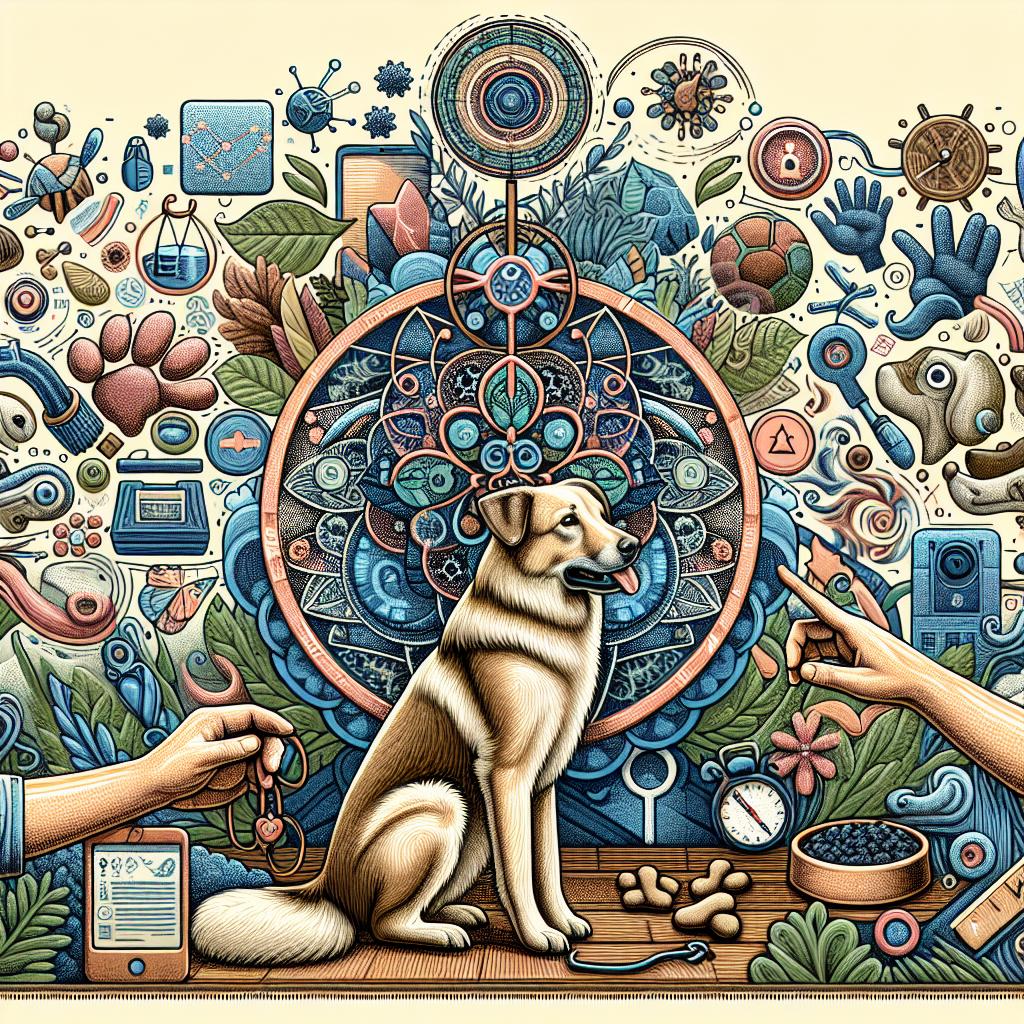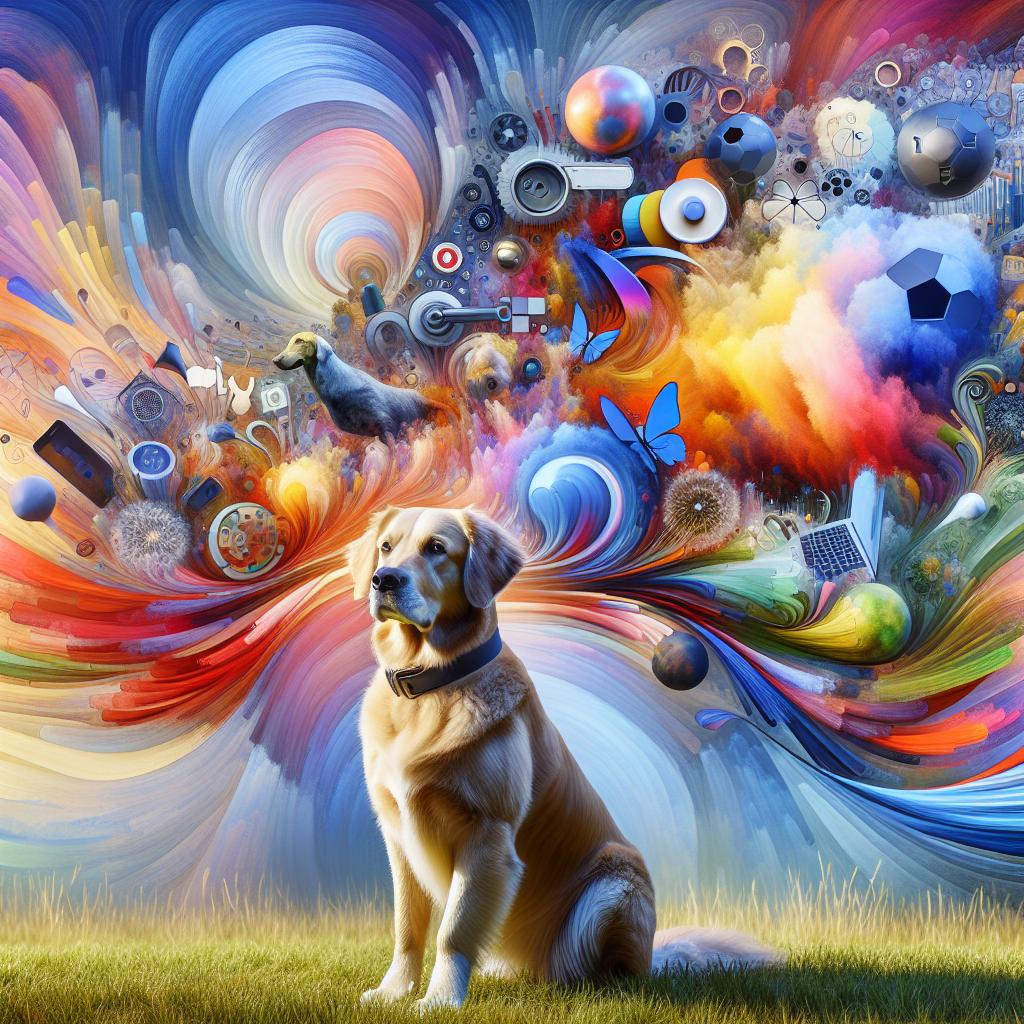In a world filled with bustling activity, vibrant sights, and a symphony of sounds, our canine companions often find themselves caught in the web of distractions. From the rustling of leaves on a breezy day to the playful bark of a neighbor’s dog, these stimuli can easily pull a dog’s attention away from its owner, making training and daily activities a challenge. However, just like us, dogs can learn to focus amidst the chaos. Training your dog to ignore distractions not only strengthens your bond but also cultivates obedience and enhances your pet’s overall well-being. In this article, we will explore effective techniques and valuable insights to help you guide your furry friend towards a more focused and attentive state, ensuring that every outing becomes a seamless adventure. So, leash up, and let’s embark on this journey to help your dog navigate the world with poise and grace!
Understanding the Psychology Behind Distractions in Dogs
To effectively train your dog to remain focused despite distractions, it’s essential to grasp the underlying psychology that drives their behavior. Canines, by nature, are highly social and instinctively responsive to their environment. Understanding their attention triggers can significantly aid in designing effective training strategies. Dogs are prone to distractions caused by various stimuli, including sounds, smells, and visual cues. Identifying these distractions requires you to consider your dog’s unique experiences and preferences. For example, a dog may become easily distracted by:
- Passersby
- Other animals
- Familiar scents (e.g., other dogs or food)
- Unexpected noises (e.g., cars, sirens)
To combat these distractions, positive reinforcement plays a pivotal role in your dog’s learning process. By rewarding focus and compliance with treats or affection, you can encourage your dog to prioritize your commands over their natural instincts. Implementing consistent training methods is vital for success, and one effective approach is to gradually expose your dog to various distractions while maintaining control over their environment. Consider the following training techniques to help your dog learn to ignore distractions:
| Technique | Description |
|---|---|
| Desensitization | Gradually expose your dog to distractions at a distance, rewarding calm behavior. |
| Focus Exercises | Practice ‘look at me’ commands to redirect their focus back to you. |
| Controlled Environment | Train in a quiet space, slowly introducing distractions as your dog improves. |

Establishing a Solid Foundation: Basic Commands and Focus Techniques
To ensure your dog learns to ignore distractions, starting with basic commands is essential. These commands build a framework for effective communication between you and your furry companion. Here are some key commands to incorporate into your training routine:
- Sit: A fundamental command that teaches your dog to remain in place.
- Stay: This helps your dog understand the importance of waiting and not moving, even when distractions are present.
- Come: This recalls your dog’s focus back to you, regardless of surrounding distractions.
- Leave It: A critical command that encourages your dog to ignore objects or situations they may be tempted to engage with.
Once your dog has mastered these commands, introducing focus techniques can enhance their ability to concentrate amid distractions. One effective method is the “Look at Me” technique, where you encourage your dog to make eye contact with you instead of focusing on the surrounding distractions. You can gradually increase the level of distractions while rewarding your dog for maintaining focus. To help visualize this training process, consider using the following simple table:
| Distraction Level | Training Steps | Reward Type |
|---|---|---|
| Low (Quiet room) | Practice commands | Treats |
| Medium (Park with few people) | Introduce “Look at Me” | Praise & Treats |
| High (Busy street) | Maintain focus under stress | Playtime |
By consistently applying these commands and focus techniques, you not only strengthen your dog’s obedience but also foster a deeper bond as they learn to rely on you amidst distractions.

Gradual Exposure: Desensitizing Your Dog to Common Distractions
To effectively desensitize your dog to common distractions, you should begin with a controlled environment where the distractions can be introduced gradually. Start by identifying distractions your dog encounters regularly, such as passing cars, other dogs, or people. Within a quiet area, expose your dog to these distractions at a distance that won’t provoke a significant reaction. Reward calm behavior with treats or praise to help reinforce the desired response. Over time, gradually decrease the distance to the distraction while maintaining your dog’s focus on you. This slow progression allows your dog to adjust without becoming overwhelmed.
Consider creating a structured plan to monitor progress and adjust exposure levels accordingly. Utilize a simple table to track your dog’s reactions and successes:
| Distraction | Distance (ft) | Response | Reward Provided |
|---|---|---|---|
| Other Dogs | 30 | Calm | Treat |
| People | 20 | Excited | No Treat |
| Cars | 25 | Neutral | Treat |
Adjust the exposure and rewards based on your observations. Consistency and patience are key—repeat this process multiple times to establish a strong foundation for distraction management in a variety of scenarios.
Reinforcement Strategies: Encouraging Positive Behavior for Long-Term Success
Training your dog to manage distractions effectively is crucial for building a strong foundation of positive behavior. One of the most effective ways to encourage focus and minimize distractions is through reinforcement strategies. These can include immediate rewards, such as treats or praise, when your dog successfully ignores a distraction. Establishing a consistent environment where your dog can thrive without interruptions is key. Consider rewarding your dog in the following ways:
- High-value treats for immediate reinforcement
- Verbal praise to boost confidence
- Playtime as a reward for sustained focus
Additionally, apply systematic desensitization techniques by gradually introducing distractions while rewarding your dog for maintaining attention. This can be structured in a progressive manner, starting in a quiet environment and slowly increasing the complexity of the stimuli. Tracking your dog’s progress is essential, so consider using a simple table to monitor their behavior over time:
| Session | Distraction Level | Response |
|---|---|---|
| 1 | Low | Excellent |
| 2 | Medium | Good |
| 3 | High | Needs Improvement |
By incorporating these strategies, you can shape your dog’s ability to stay focused across various environments, fostering long-term success in their training experience.
Q&A
Q&A: Training Your Dog to Ignore Distractions
Q1: Why is it important for my dog to ignore distractions?
A1: Training your dog to ignore distractions can significantly enhance their focus and obedience. This skill is essential, especially in environments with potential hazards, like busy streets or parks, where distractions can lead to dangerous situations. A well-trained dog is not only safer but can also enjoy outings with more freedom, knowing they can remain calm amidst the chaos.
Q2: What are common distractions that may affect my dog?
A2: Distractions come in many forms! Common culprits include other animals, people, loud noises, and even enticing scents. Your dog might become distracted by a squirrel darting by, a child playing catch, or the tantalizing aroma of food wafting from a nearby picnic. Understanding what distracts your dog will help you tailor your training approach.
Q3: Where should I start with distraction training?
A3: Begin in a controlled environment where distractions are minimal. This could be your backyard or a quiet part of the local park. Start with basic commands, such as ‘sit’ or ‘stay,’ and gradually introduce mild distractions. Once your dog can focus amidst these minor distractions, slowly increase their intensity over time.
Q4: How can I effectively train my dog to ignore distractions?
A4: Use positive reinforcement techniques! Whenever your dog successfully ignores a distraction, reward them with treats, praise, or playtime. You can also practice the ‘leave it’ command. Begin with low-value items and gradually progress to higher-value distractions. Consistency and patience are key; make sure to keep training sessions short and engaging to maintain your dog’s interest.
Q5: What if my dog seems unable to ignore distractions?
A5: If your dog struggles, don’t be discouraged! Each dog learns at their own pace. It may help to reduce the intensity of the distractions in your training environment initially. Consider breaking down commands into smaller steps and reinforcing progress. If challenges persist, consulting a professional trainer can provide tailored strategies to meet your dog’s specific needs.
Q6: How often should I practice distraction training with my dog?
A6: Regular practice is crucial! Aim for short sessions of 5-10 minutes, multiple times a day, rather than long, exhausting training marathons. Incorporating training into daily routines, like walks or playtime, can help reinforce skills in real-world scenarios—making training a natural part of your dog’s life.
Q7: Can distraction training benefit my dog in other ways?
A7: Absolutely! Training your dog to ignore distractions not only improves their focus but also strengthens your bond and communication. A dog that understands your cues is generally calmer and more confident. This training also helps socialize your dog, teaching them to coexist peacefully with other animals and humans, enhancing their overall well-being.
Q8: What should I do if my dog gets too distracted during training?
A8: If your dog becomes overly distracted, it’s a sign to dial it back! Shift to a quieter environment or increase the distance from the distraction until they can focus again. Remember, training should be a positive experience for both you and your dog. When frustration arises, take a break, and return when both of you are ready to try again!
Q9: Is there a specific age when my dog should start distraction training?
A9: Training can begin as early as puppyhood, when your dog is around 8 weeks old. Early socialization is crucial, as young dogs are particularly impressionable. That said, older dogs can also learn to ignore distractions—it’s never too late to teach! Just tailor the approach to accommodate their age and previous experiences.
By maintaining consistency and patience throughout the training process, you and your furry companion can achieve success together!
To Conclude
As we conclude our exploration of training your dog to ignore distractions, it’s essential to remember that this journey is as much about patience and understanding as it is about commands and techniques. Just like humans, dogs experience a world filled with sights, sounds, and smells that can easily steal their attention. By consistently applying the strategies we’ve discussed, you’re not just teaching your furry friend a skill; you’re building a stronger bond rooted in trust and communication.
With time, practice, and a sprinkle of creativity, you’ll soon find that your dog can navigate the bustling world with confidence and composure. So, step outside, embrace the distractions, and celebrate each small victory along the way. The world may be full of temptations, but with your guidance, your dog can learn to focus on what truly matters—your companionship. Happy training!

